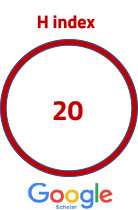| Acceptance rate | 46% |
|---|---|
| Time to first decision | 6 months* |
| Time to decision with review | 50 days* |
*Approximate number of days
**The days mentioned above are averages and do not indicate exact durations. The process may vary for each article.
ACTA Pharmaceutica Sciencia
2005 , Vol 47 , Num 2
DEVELOPMENT AND IN VITRO EVALUATION OF HYDROPHILIC MATRIX TABLETS OF DILTIAZEM HYDROCHLORIDE
Department of Pharmaceutics, IT, BHU, Varanasi - INDIA
Viewed :
23814
-
Downloaded :
6807
The present study aimed to formulate and evaluate hydrophilic matrix tablets of diltiazem hydrochloride to achieve a controlled and sustained drug release with reduced frequency of drug administration, reduced side effects and improved patient compliance. Matrix tablets of diltiazem hydrochloride were prepared using polymers like hyroxypropylmethylcellulose (HPMC K15, HPMC K4), sodium carboxymethylcellulose (SCMC) and Guar gum, and different diluents like lactose, starch, microcrystalline cellulose. All the batches were evaluated for thickness, weight variation, hardness, drug content uniformity and in vitro drug release characteristics as per USP XXIV monograph. The drug release rates from matrix tablets were compared with marketed SR formulations. Matrix erosion and swelling studies were also carried out. The release kinetics and mechanism of drug release by regression coefficient analysis and Peppas exponential release model equation were also investigated. SCMC matrix tablets showed more hydration and erosion than other matrix tablets. Tablets having HPMC K15 gave more sustained release than other hydrophilic polymers studied and it was comparable with marketed SR tablets. Amount of HPMC K15 and presence of different diluents significantly affected the drug release. It was observed that all the fabricated tablets delivered the drug following Higuchi diffusion mechanism.
Keywords :
DILITIAZEM, HYDROCHLORIDE, HYDROXYPROPYLMETHYLCELLULOSE, GUAR GUM, SODIUM CARBOXYMETHYL CELLULOSE, HIGUCHI DIFFUSION





